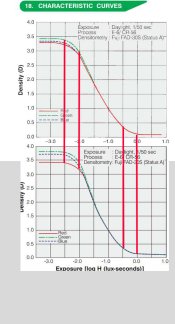That could be said for all E6 slide films, but which one has the narrowest exposure latitude? Or all they all the same?
I haven't used slide film for twenty years, but now I need a roll to test and calibrate my Gossen Sixtomat Digital light meter. It gives readings that are one stop "faster" than my Capital/Soligor spot meter, and I get negatives with poor shadow detail if I go by the readings the Gossen meter gives me.
I haven't used slide film for twenty years, but now I need a roll to test and calibrate my Gossen Sixtomat Digital light meter. It gives readings that are one stop "faster" than my Capital/Soligor spot meter, and I get negatives with poor shadow detail if I go by the readings the Gossen meter gives me.













